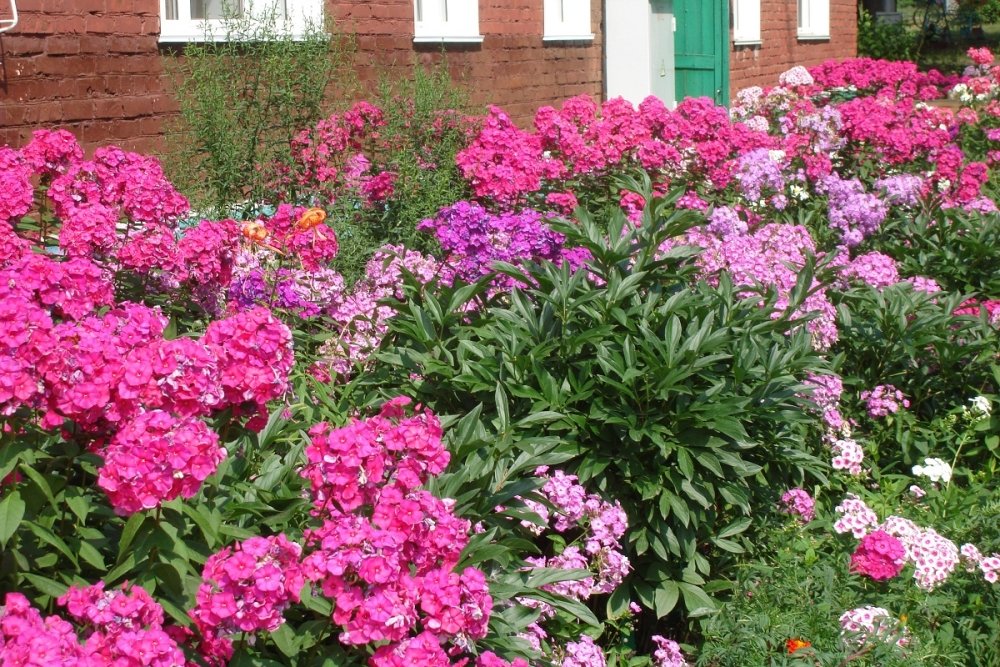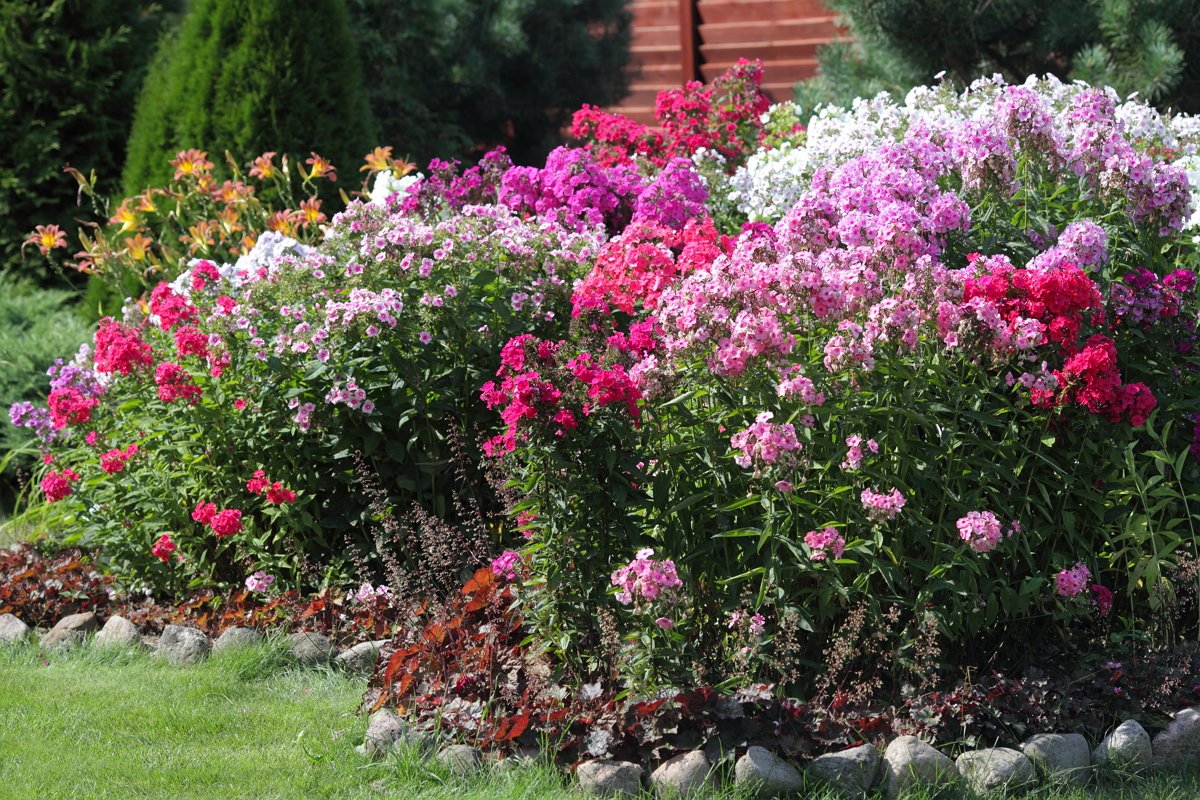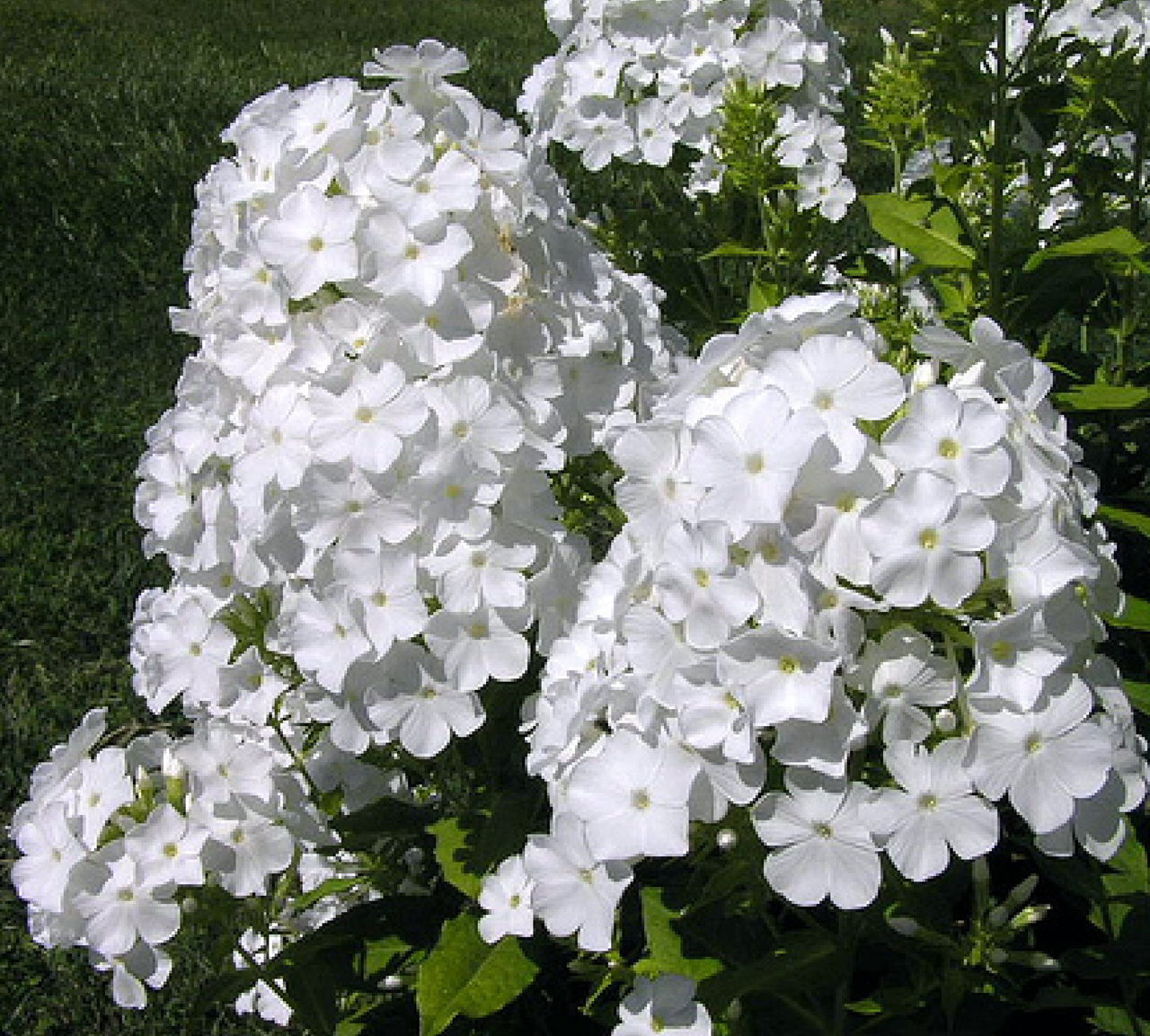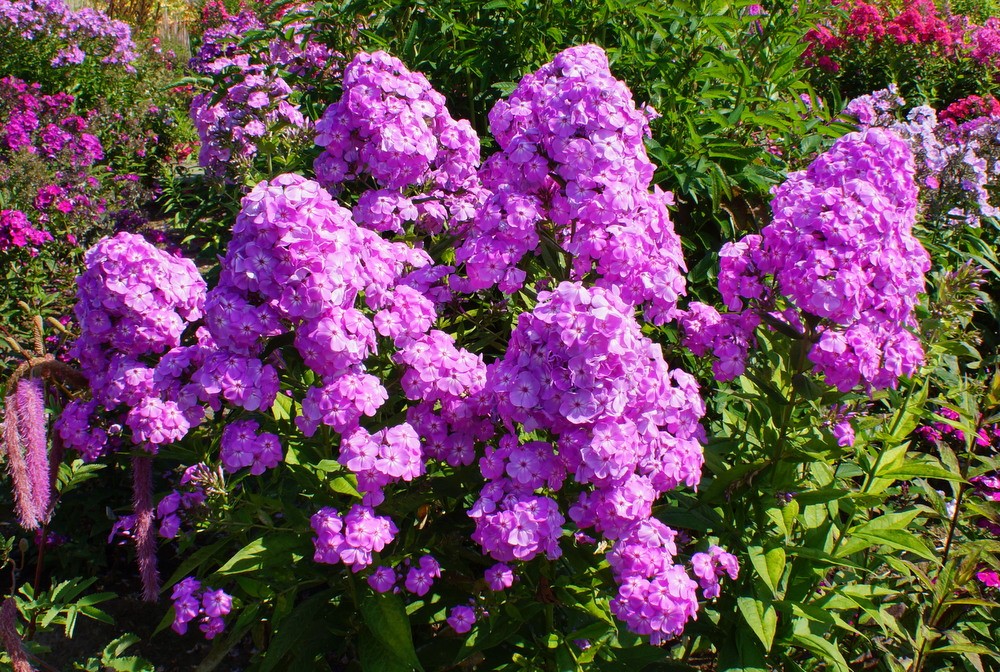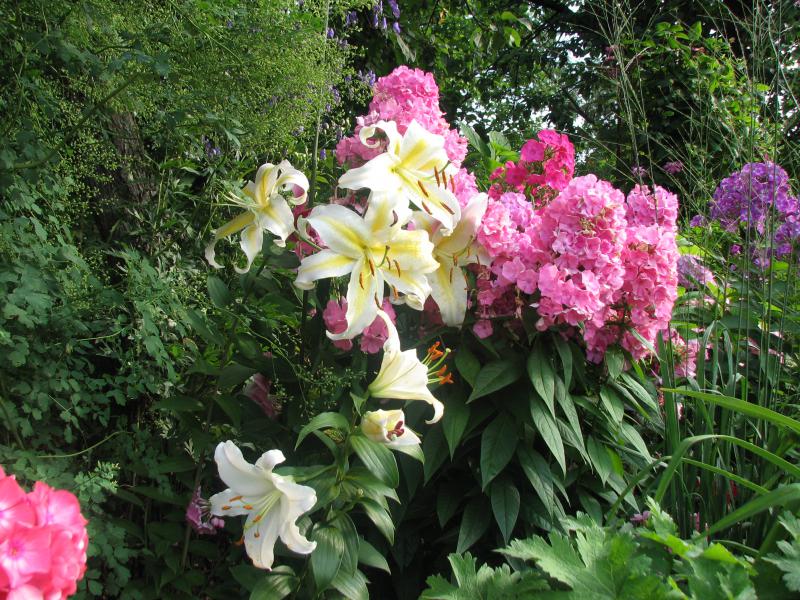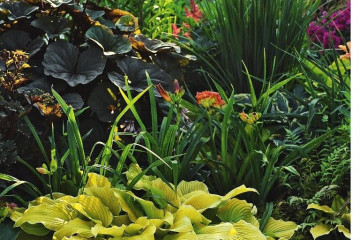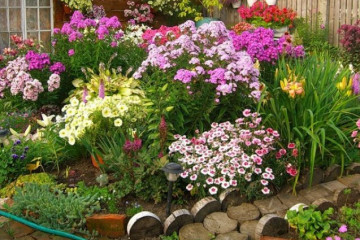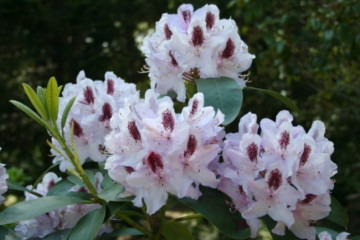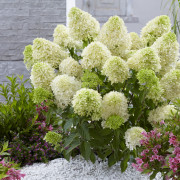Phlox on a flower bed in the garden
Content:
Flower beds with phlox attract the eye with their unique colors and vigorous flowering. These amazing flowers can decorate any home garden. At the same time, they do not cause problems in the growing process, but only if a certain technology is followed.
Phlox in landscape design
Since phlox are unpretentious plants, they can be planted in a variety of places, regardless of the type of soil. Even if there is no piece of land, you can plant flowers in a container. If there is land, you can give free rein to imagination and build many flower beds with phlox.
With certain knowledge in the field of landscape design, with the help of phlox, you can create various compositions that will differ in harmony in color and location in space.
Plain flowers are best suited for decorating parks and large areas, as they look most advantageous from a long distance. For those who like to enjoy the beauty of flowers in the early morning or evening, varieties with white flowers or chameleons that change their color are best suited.
Choosing a place for a flower bed
Despite the fact that phlox are considered unpretentious and versatile plants, they will not grow in any chosen place. For fruitful cultivation, you need to take care of the appropriate quality of the soil and privacy.
To make phloxes feel comfortable in the garden, the following conditions must be provided:
- High-quality lighting - all phloxes are light-loving crops that do not develop well and bloom in shade conditions. At the same time, different categories of plants require their own lighting intensity. Areas with diffused lighting are considered the most optimal place to grow these flowers.
- Protection from wind and drafts - otherwise the plant will lose its accuracy and compactness.
As for the topography of the soil, it can be either perfectly flat or have all kinds of defects. The only thing to consider: these flowers should not be planted in lowlands, depressions, as well as in places with the likelihood of water accumulation. As for slopes, slopes and difficult terrain, phloxes can grow normally in such places if the necessary conditions are provided for them.
Types of phlox - choose the most beautiful
It is very difficult to highlight the most beautiful flowers, since each grower has his own. Some prefer low-growing bushes, others prefer tall ones with large inflorescences. Perennial phloxes are very popular among gardeners, since they are more unpretentious in care and do not require annual planting of seedlings.
All phloxes are good and beautiful in their own way, but the following are still considered the most popular:
- Snow Avalanche - refers to the early flowering pyramidal group. In height, these flowers grow up to 80 cm. Flowers are pure white.
- Delta is another flower belonging to the early blooming pyramidal group. The height of an adult plant does not exceed 1 meter. The flowers are white with a raspberry-colored center.
- Natasha - develops slowly and grows no more than 80 cm. Flowers are two-colored with white petals and wide crimson-pink stripes.
- Hummingbird - belongs to the representatives of small-colored phlox. Differs in branched and large conical inflorescences. Flowers of light lilac-blue shades with a lilac star in the center. Differs in high winter hardiness.
- Twinkling Star - star-shaped flowers with a characteristic fragrant aroma and pointed edges. Bushes are undersized. The flowering period is from June to September. Due to its miniature size, this variety can be grown on balconies.
- Ferdinand - grows to a height of 60 cm. Branched stems with needle-like, round, star-shaped, dissected petals. The color can be different. Differs in strong aroma and double flowering.
- Davids Lavender is a powerful broad-leaved flower with oval-conical lilac inflorescences with a white center.
- Selena is a medium-sized plant, the height of the bush does not exceed 80 cm. Flowering begins in the middle of summer. Lush conical inflorescences of dark pink color with a gray haze.
- Bach - grows up to 80 cm in height. The flowers are medium-sized, dark pink in color with a raspberry ring, bloom in July. Flowers of this variety are sensitive to the sun and bad weather, so planting should be done in partial shade.
- Berendey is a compact flower with strong shoots and large, rounded inflorescences. The plant grows to a height of 80 cm. The flowers are large lilac, covered with a silvery bloom.
Phlox are very beautiful flowers, regardless of the variety and name. Their inflorescences do not leave anyone indifferent, so each gardener must decide for himself which of them to plant on his site.
Choice of colors
Today there is a large selection of phlox, differing in color palette. Flowers can be chosen from snow white to deep purple. The only thing is that there is no yellow color and its shades in the palette, but only white-pink-lilac tones are present.
All phloxes have a delicate color with romantic notes.
Effective combination of phlox with other colors
Many novice gardeners are wondering what to plant next to phlox. Before deciding which flowers to plant on a flower garden, you need to find out what kind of plant these or other plants belong to.
Ground cover flowers are best suited for decorating slides, wall decor and garden flowerpots. For accentuating curbs, garden paths and dividing the garden into sections, it is best to give preference to low-growing plants.
Lilies and phloxes in one flowerbed
Lilies and phloxes in the same flowerbed are perfectly combined, but this does not apply to all species. Therefore, before you can beautifully plant phlox next to a lily, it is necessary to develop a certain scheme. Phloxes of blue and purple shades in combination with lilies look too colorful. A good background for the growing shoots of lilies are creeping varieties.
With catnip
To emphasize the splendor and massiveness of the plant, you can plant a catnip next to it, which will seem completely weightless in this combination. The duet will be perfect not only in terms of color, but also textures, shapes and contours. It is best to combine pink-colored phlox varieties with catnip.
Due to the huge variety of phlox, which differ in color and height, all kinds of flowers can be used to decorate flower beds.At the same time, most often for disembarkation, combinations of phlox with hosts, roses, marigolds, gladioli, lilies, and ferns are used.
How to achieve more effect
Having decided what phlox is combined with, you can easily create attractive flower beds that will delight you with beauty throughout the season. With summer-autumn varieties, it is best to place hosts, basilis or astilbe.
Top dressing for beautiful flowering
Depending on the phases of development, plants need feeding. If everything is done correctly, then you can achieve lush and beautiful, as well as long-lasting flowering.
During intensive development and growth, the plant needs abundant watering. In addition, you can feed the flower with nitrogen. During the period of bud formation, the need for nitrogen decreases and the plant requires more potassium and phosphorus. At the end of the flowering period and at the time of seed ripening, it is necessary to provide the plant with nutrients so that it can more easily endure the winter.
Throughout the growing season, phlox, whether it is an annual flower or a perennial, requires feeding, which should be carried out about 5-6 times. The method can be used both foliar and root.
Picture 6. Astilbe, roses and phlox in a flower bed
Phloxes of surprisingly bright color are ideal for organizing flower beds at home, in the country or on the balcony in a city apartment. Plants are unpretentious to care for and look great in the same area with different colors. Thanks to this, you can create a flower bed with your own hands without outside help, which will be the pride of any owner.
